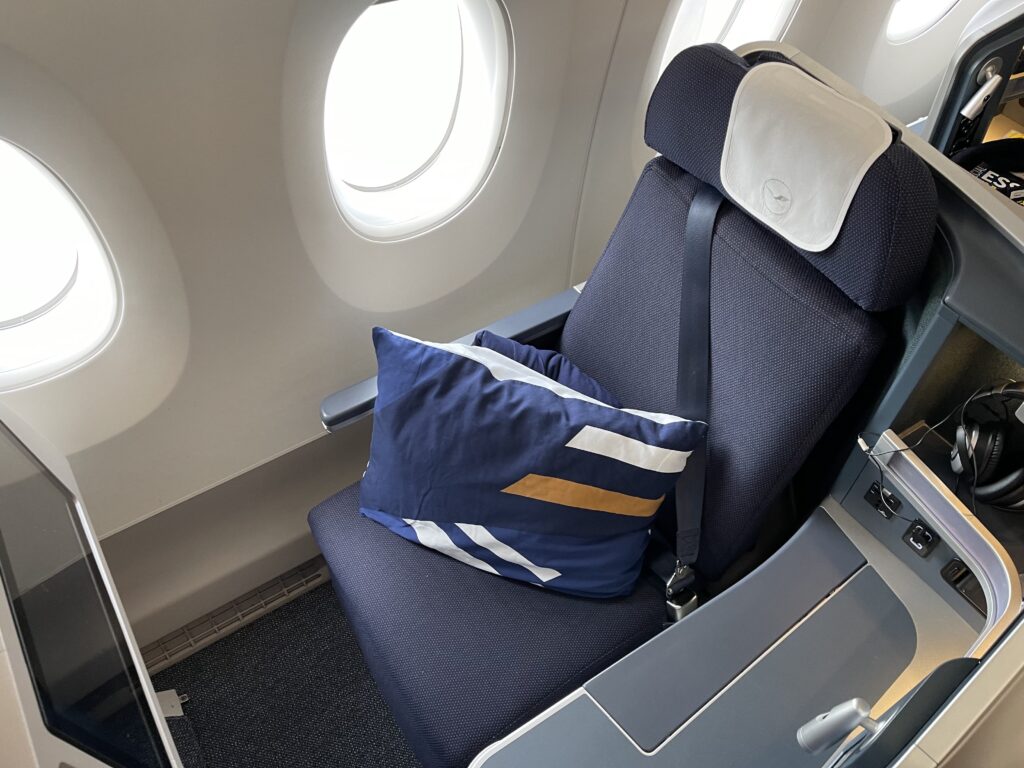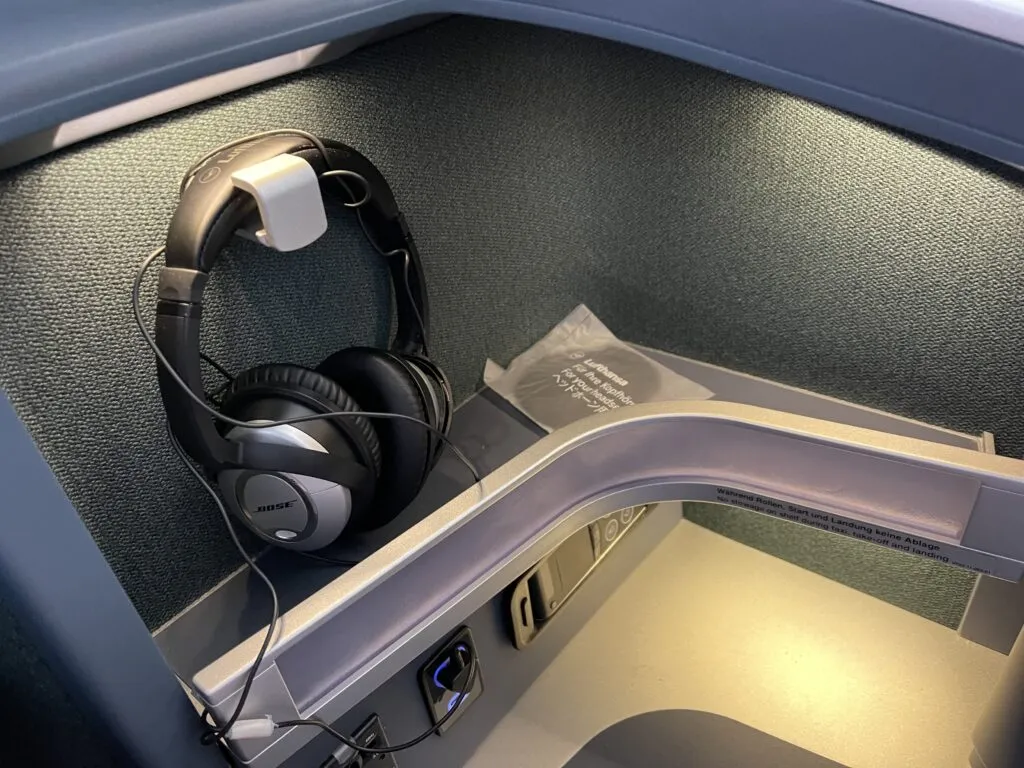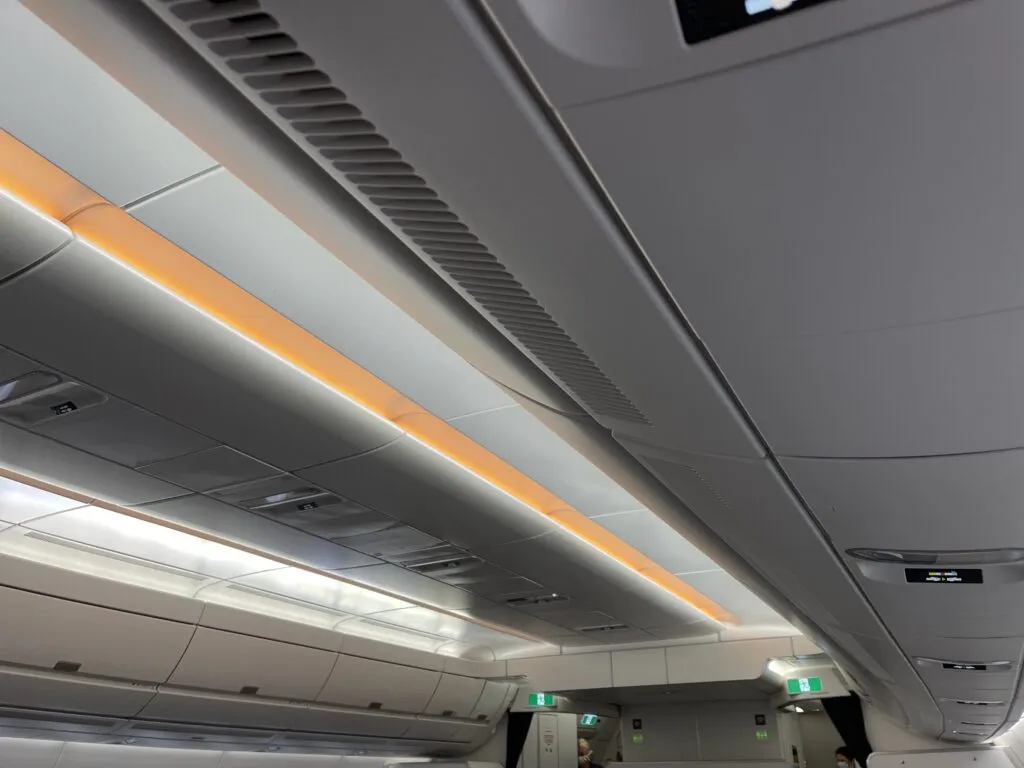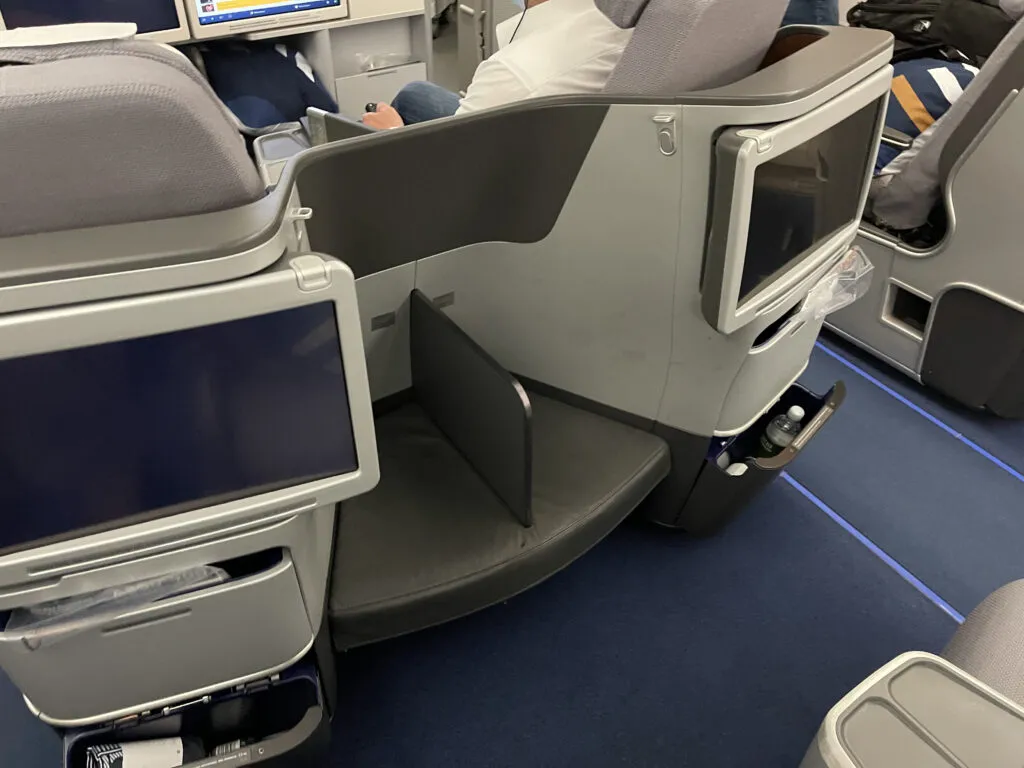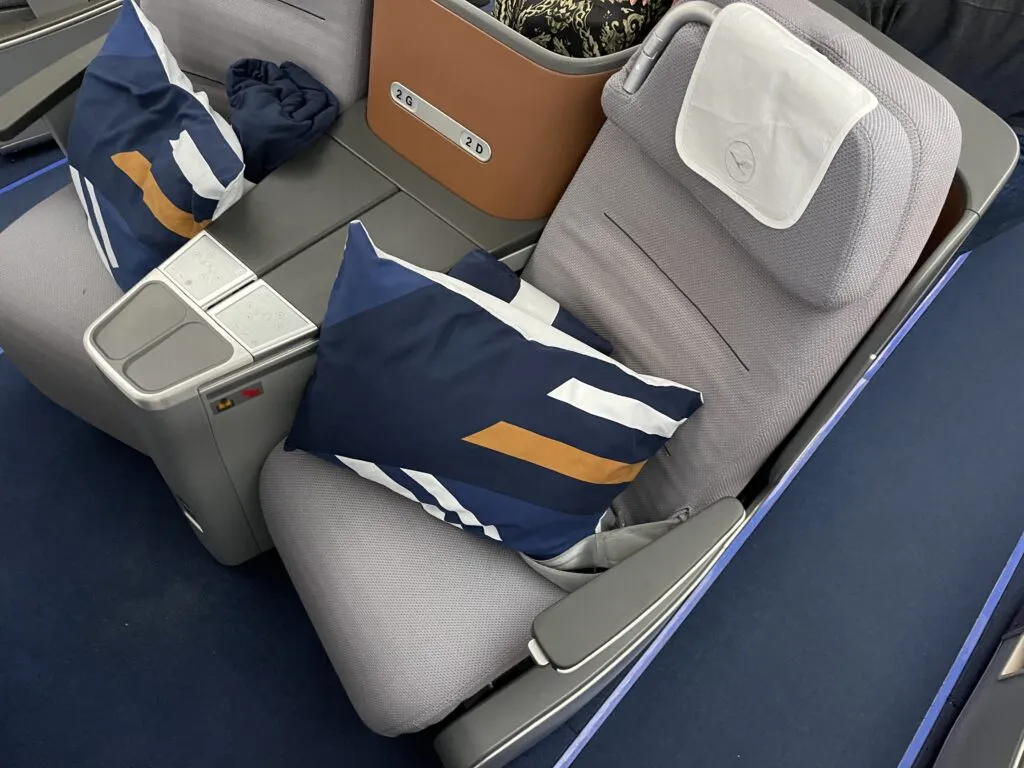 Lufthansa’s new ex-Philippine Airlines Thompson Vantage XL seats are set to fly on four Airbus A350s that the airline has taken over, repainted and lightly refurbished inside. The seat covers, the language on the signs, and a couple of small pieces of thermoplastics are the only differences between the PAL cabin created by LIFT Aero Design and this cabin that, therefore, one wag nicknamed “Lifthansa” — and it stuck.
Lufthansa’s new ex-Philippine Airlines Thompson Vantage XL seats are set to fly on four Airbus A350s that the airline has taken over, repainted and lightly refurbished inside. The seat covers, the language on the signs, and a couple of small pieces of thermoplastics are the only differences between the PAL cabin created by LIFT Aero Design and this cabin that, therefore, one wag nicknamed “Lifthansa” — and it stuck.
So when Lufthansa offered to fly me to wherever the seats were going — in this case, from Munich to Montréal and back — I jumped at the chance. While on the road, the return flight was swapped back to the regular old grey Collins Aerospace Diamond-based seats that are the Lufthansa standard, making it an even more interesting comparison between the old and new cabins.
The first impressions of the new Lifthansa cabin are very pleasing. The more spacious layout is a definite plus, and a bit of colour with the blues rather than the greys gives some visual interest. A bit of sparkling gleam designed into the metals and even some of the thermoplastics gives a surprising amount of brightness to the seat area as well.
The seat itself is a fairly standard Vantage XL, flying with Qantas since 2015. The extra width of the A350 cabin gives extra width at the hip, shoulder and ankle squeeze points, although on the immediately window-adjacent seats the height of the foot cubby meant that turning from one side to the other during an afternoon involved an unpleasant amount of shin-banging.
The seats have an excellent amount of storage, particularly for small items like phones, headphones and chargers, and privacy is very good in the seats away from the aisle, although I didn’t have the opportunity to check the zero-sum problem of the staggered seats next to the aisle, which are much less private.
There’s a massage system — really, the seat softness setting inflating and deflating — that was actually quite pleasant, while the controls themselves were very pleasingly set off to the side away from where your elbow sets up.
IFE is a massive 18.5” Safran RAVE screen, which feels even bigger than the 15-18” (depending on aircraft) on the existing seats because it’s so much closer. On the day of flight, however, the downside of the signature RAVE glossy surface was rather a lot of reflection until more than three quarters of the cabin had closed their windows.
A rare downside is that PAL didn’t opt for the centre bins. This adds headroom over the heads of passengers in the middle, but creates a space crunch, particularly given that there are seats where the overhead bins are not in use.
Overall, it was impressive: modern, spacious, private and comfortable, although the fact that Lufthansa is operating one flight attendant down in the business cabin at present was very noticeable during the meal service.
On the return overnight, I was fast enough to spot the aircraft swap to be able to grab one of the centre pairs of seats. While this does mean playing footsie (or, indeed, kneesie) with your neighbour, the tradeoff is that there’s no need for that midnight clamber between the window seat and the aisle — unpleasant whether you’re the clamberer or clamberee, either way.
First impressions were a disappointment after being in the new cabin just a few days earlier: hard, stark and a real disconnect between the Gemütlichkeit-filled crew and the cold, boring grey.
After the Lifthansa Vantage seats, the old seats felt like such a disappointment: narrower, really exposed, and altogether a substantially lower standard.
My (very pleasant) seat neighbour and I had to excuse ourselves over our orange juice the next morning for waking each other up by bumping knees whenever we turned over.
The older, matte-finish inflight entertainment system felt a long way away, especially for a touchscreen, while overall the comfort level and mechanics of the seat — and the capacitive touch buttons right on the armrest that means the seat randomly starts moving if you rest your arm on the, well, armrest — are really feeling their age.
The only upside was the centre bins, necessary for this high-density cabin.
All in all, the new seats really show the problem that Lufthansa has: in 2012 it chose a seat that was already five years old and, and a full twelve years after the fully flat seat without direct aisle access was first installed.
Now that Lufthansa has a 2015-era seat, the old seat seems even longer in the tooth than it did. The airline plans to take a total of four of these ex-PAL aircraft, plus five ex-Hainan Boeing 787-9s with herringbone seating, before it introduces its next-generation seat in 2023.
A key question for the airline at that point will be how quickly it — and its seatmaker and in-house MRO, Lufthansa Technik — can get the new seats retrofitted on its older aircraft to raise the standard.
Related Articles:
- Reskinned ex-PAL Vantage XL asks Lufthansa hard new biz questions
- Inside Lufthansa’s design process for its new 777X business class
- Crucial milestone achieved as Boeing 777X takes first flight
- Lift designs thoughtful, elegant cabins for revitalised Philippine Airlines
- Lufthansa Group unveils staggered direct aisle access in business
- Eurowings unveils new old Lufthansa business class for longhaul?
- Lufthansa’s mediocre business class problem bites on the A350
Lufthansa provided flights to Montréal to enable this analysis, but all opinions are those of the author.
All images credited to the author, John Walton





